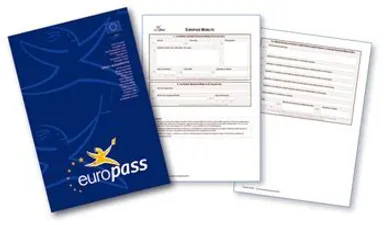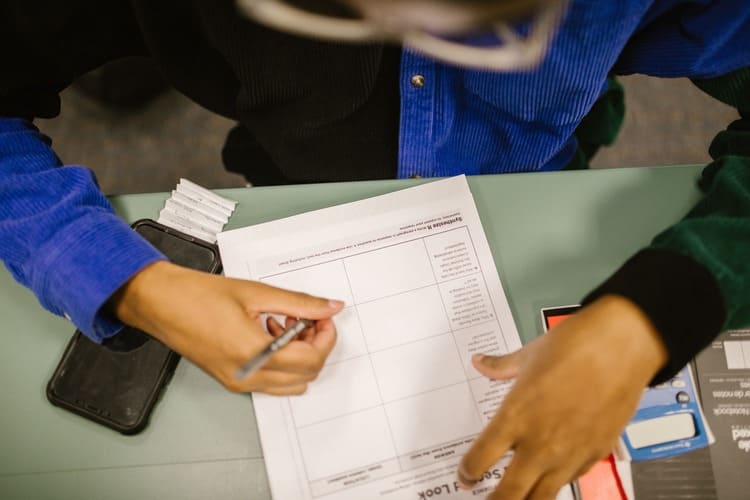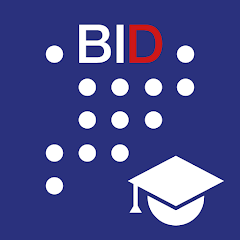Decision support
As a mobility referent, I have identified the possible learning outcomes / competences to be acquired during the mobility and I have entered them in the pedagogical agreement.
What is possible?
Click on the thumbnail of your choice

I want to document the learning outcomes of the mobility period. What is the approach / what are the documents / tools I can use?

I want to integrate/use the OL obtained in the training process. What is possible in the diploma / certification?
1 - Si vous souhaitez documenter la participation à la période de mobilité, vous pouvez :
- D’une part délivrer une attestation de participation signée par votre partenaire et les entreprises d’accueil. Elle n’engage que votre organisation et vos partenaires.
- D’autre part, dans le cadre d’un financement de la mobilité ERASMUS+, vous devez utiliser un contrat pédagogique et ensuite délivrer un complément au contrat pédagogique après l’activité qui confirme que la mobilité s’est déroulée comme prévu. Le complément au contrat pédagogique doit être signé par le participant et le partenaire d’accueil en fin de la mobilité (daté du dernier jour de présence ou après).
Ce modèle est conçu pour répondre aux exigences minimales en matière de documents justificatifs ERASMUS+ définis dans le contrat financier de votre projet. Le complément au contrat pédagogique n’est pas nécessaire si d’autres documents émis répondent aux mêmes exigences.
2 - Si vous souhaitez documenter les acquis d’apprentissage pendant la mobilité, vous pouvez également délivrer des EUROPASS mobilité.
- Europass mobilité est un outil dans le dispositif européen Europass. L’accès à la plateforme en ligne Europass est gratuite et accessible en 30 langues.
- Europass mobilité est un document nominatif et personnalisé, il décrit la période d’études ou de stage effectuée dans un autre pays européen. L’Europass mobilité présente comment, où et par qui le stagiaire a été formé. Il présente les activités réalisées et l’ensemble des compétences acquises. C’est un gage de qualité qui apporte les «preuves» des activités réalisées et des compétences acquises à l’étranger.
- Le document peut être délivré pour toute période de mobilité sur demande auprès du Centre National Europass ou, dans le cadre d’un projet ERASMUS+, directement via votre espace ERASMUS+.
- La démarche : c’est à l’organisme d’envoi d’en faire la demande, avant le départ en mobilité. Il est renseigné par l’ensemble des acteurs concernés : L’organisme d’envoi complète les informations sur le parcours. La structure d’accueil en Europe précise l’identité et la fonction du tuteur, décrit les aptitudes et les compétences acquises, puis signe et appose son cachet. Le bénéficiaire signe le document. Enfin, au retour du bénéficiaire, l’organisme d’envoi délivre officiellement l’Europass Mobilité, le signe et y appose son cachet.




You wish to use mobility as a learning situation to be integrated into the training and to evaluate the acquired knowledge
It is necessary to ensure that the European or international mobility project is consistent with the educational program. Together with the teaching staff, it is important to ensure that the mobility program is well coordinated with the training strategy of the learners concerned.

In order to be able to evaluate the progress and learning outcomes during a mobility, you can previously :
- Proceed with the positioning of the learners to inform the host partners about the learner’s profile and his/her expectations and representations: By a EUROPASS CV, by a motivation file or portfolio, by relating previous experiences and a description of the work environment in which the learner has evolved), by specifying the European level of training, … You can therefore be led to adapt, individualize the content of the mobility in cooperation with the host partners according to the profile of the learner… The positioning will also facilitate the Matching with the host company.
- And / or develop a specific evaluation grid that will assess progress and whether the expected learning outcomes have been achieved (or partially achieved / not achieved). You may need to test the skill before departure and compare at the end of your stay. Several evaluation methods and situations are possible: observations before, during, after, a test, a journal to be filled out daily, an evaluation grid with the host company, organizing an interview, a presentation in front of a jury…
Once the assessment has been completed, it is helpful to have a written record of the learning or results. You can also issue a validation certificate upon the learner’s return.
This can take many forms:
- The rubric is sufficiently standardized to record learner outcomes.
- A report from the evaluators, a validation report is signed
- A certificate or open badge detailing the acquired knowledge

If you are considering recognition of prior learning during mobility in order to integrate it into the certification upon return, you must:
Make sure that the selected competences are included in the certification referential of the diploma concerned and that the certifier has provided for this in the examination regulations. If the certifier has planned to recognize the learning outcomes following a mobility, there are certainly instructions, methods, criteria for evaluation, validation and recognition. If you’re not sure what’s possible, find out before you set out to make the move. Inform the certifier of your certification project.
In France
1/ Optional mobility unit – MEN
An optional “mobility” unit validates the results of a period of training completed in a Member State of the European Union, the European Economic Area or the European Free Trade Association. The possibility of doing part of the training abroad in a member state of the European Union has been extended since 2020 of the professional baccalaureate (BAC PRO) to Certificates of professional competence (CAP), professional diplomas (BP), as well as certificates of craftsmanship and complementary mentions (provided that this possibility is integrated into the revision of the diploma for the trade in question since 2020). A list of the professional and general skills that make up the “mobility” optional unit, the definition of the test and the evaluation criteria / evaluation grid are available.
ECVET Vademecum EN 2015_05 (education.fr)
According to section 5 of the August 30, 2019 order:
“A certificate called “Mobility Pro “A certificate of achievement, attached to the diploma, is issued to candidates who have obtained a mark of 10 or more in the assessment of the optional mobility unit and who have successfully taken the tests for their diploma in question. Those who have not obtained the diploma may choose to retain the benefit of the optional unit assessment for a period of five years.”
2/ CMA France: an optional “Europe mention” in the CMA France BTM certification (an experiment is underway)
Within the framework of this Erasmus+ Good Practice Exchange project, and in cooperation with several CFAs of the network, CMA France is currently testing the feasibility of a mobility with a certification aim – “Europe mention” in the courses of the Brevet de technicien de métiers – BTM “. A first test phase concerned the BTM Pâtissier title during the 2021-2022 session. Other test mobilities will be conducted until 2025. If successful, the conditions of implementation and the methods of evaluation, validation and recognition of this mobility for certification purposes will be included in the regulations when the BTM Pâtissier is renewed in the RNCP in 2025.
Suggestion: Candidates should prepare a factual presentation of their mobility experience and what they have observed. It will specify the context and environment of this mobility. The written dossier can either focus on the organization of the host company, or on the development of specific recipes. Candidates are assessed on 3 types of skills: cross-functional, organizational and technical (recipe implementation). He will therefore provide a distanced view and put into perspective the situations he has experienced in France (feedback on the organization of the company discovered, points of surprise, similarities or differences with previous experiences). He will present his experience in front of a jury. In addition, a “TAC INTERNATIONAL” skills acquisition chart can be used by the host company tutor (alone or with the trainer from the European partner or the French CFA) to help assess learning outcomes during mobility.
On the condition that the student successfully passes the BTM exams in question, the TAC (and the presentation in front of a jury) can bring a maximum of 3 additional points for a learner doing a mobility during his BTM.
In Catalonia
Recognition of internships in companies abroad (qBID application). 
In Catalonia, professional degrees are organized into Professional Modules (PM). Training Units (TUs) allow for the achievement of learning outcomes (LEs) which are the central element of the training program and the reference for teaching and evaluation activities. Learning outcomes (LOs) describe the competencies to perform functions or activities in companies. Each PM typically contains between 1 and 4 AA. Each SA is associated with evaluation criteria.
The organization in small modular units allows for the integration and recognition of learning outcomes to be achieved through internships and therefore also for the integration of an internship abroad in the training and certification upon return. To evaluate learning outcomes, Catalan schools use a specific management tool, qBID, which is an online application that acts as an intranet. With qBID, training centers, tutors and learners can take a more active role. This tool generates a personalized learning contract that includes all the activities that the learner is expected to perform in the company. This document is shared digitally between the school’s formatter, the tutor and the learner.
With qBID, the training center, the tutor and the learner can play an active role. The assessment of learning outcomes (LA) is done directly by the Catalan vocational school, taking into account the tutor’s assessment of the activities carried out by the learner in the company.
If the student is enrolled in a European or international internship, the tracking of the student’s internship is also done via qbid. It is necessary to sign an agreement on the timetable, tasks and learning outcomes to be achieved in the company (between vocational school, participant and European/international company). The tutor in the host company will evaluate the tasks performed by the learner. This evaluation is reflected in the qbid and verified and validated by the Catalan tutor. Since it is the Catalan tutor who ultimately validates the assessment of the learner’s learning outcomes, there is no need to organize an additional recognition process.






